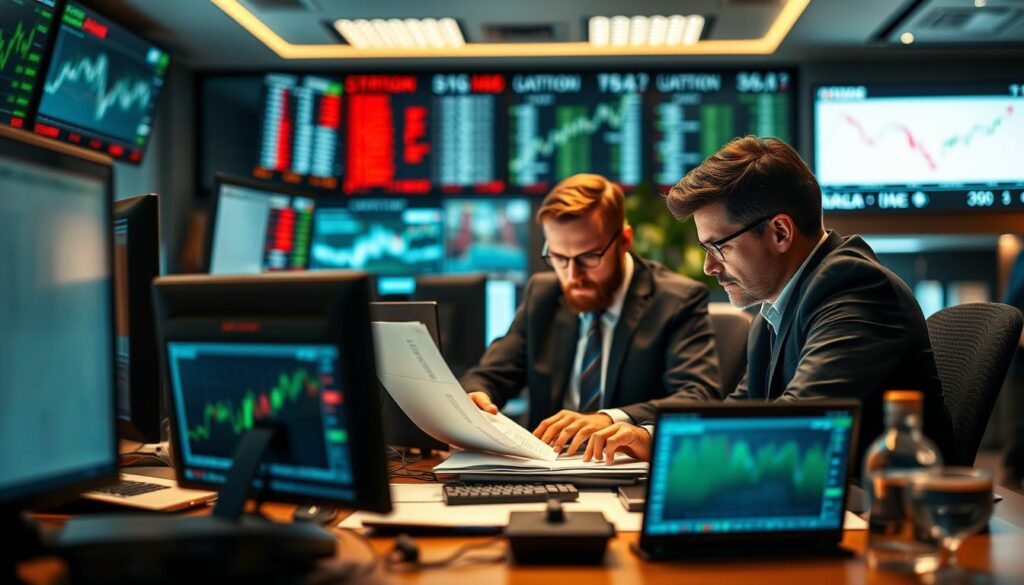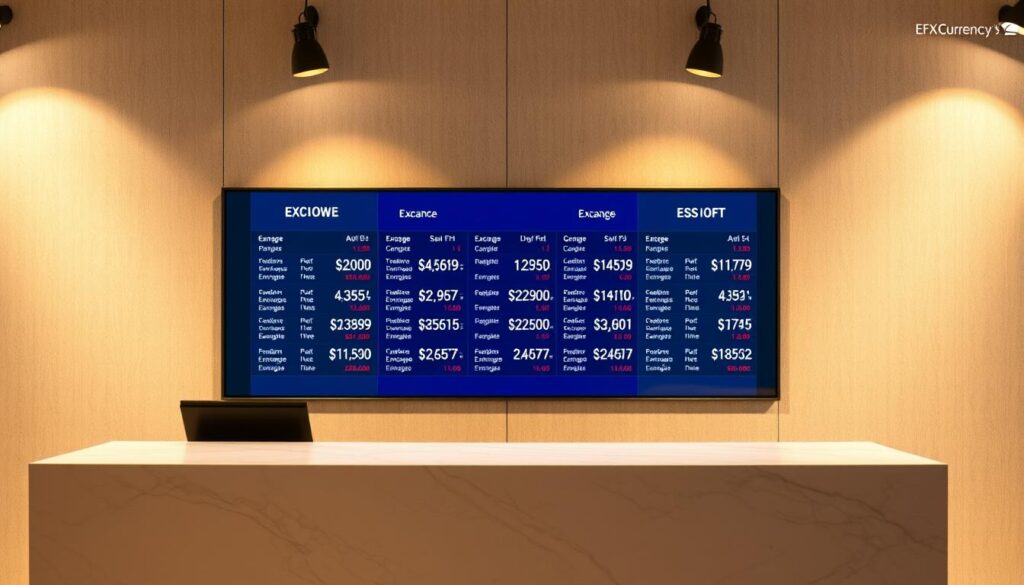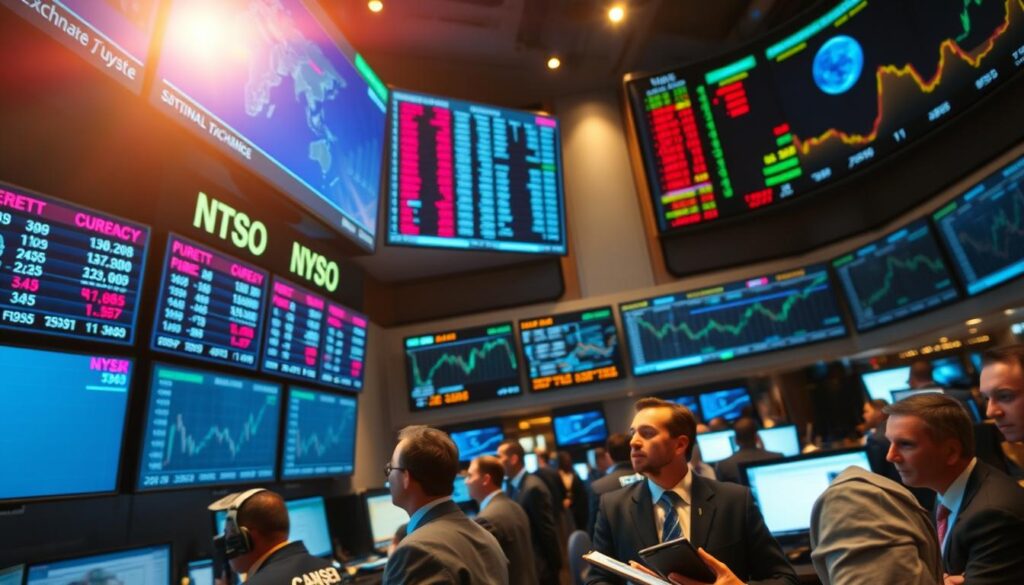Financial markets offer diverse opportunities for investors seeking growth. Two prominent options include currency trading and raw material exchanges. The former operates through decentralized global networks, while the latter focuses on tangible assets like energy resources and agricultural goods.
Currency markets facilitate round-the-clock exchanges between pairs like GBP/USD or EUR/JPY. With over $6 trillion traded daily, this sector remains the world’s most liquid marketplace. Participants range from central banks to individual traders, all reacting to geopolitical events and economic indicators.
Physical asset markets handle products such as crude oil, gold, and wheat. These trades often occur through futures contracts on regulated exchanges. Prices here respond to supply chain shifts, weather patterns, and industrial demand. Producers and manufacturers frequently use these markets to hedge against price volatility.
Understanding these differences helps investors make informed decisions. This guide breaks down trading hours, risk factors, and profit potential across both sectors. We’ll analyze how global developments uniquely impact currency values versus material prices.
Introduction to Commodities vs Forex Trading
Global economic shifts are reshaping how investors approach different asset classes. Projections indicate a slowdown to 2.5% global growth by late 2025, with central banks outside the U.S. likely cutting interest rates. This contrasts with persistent U.S. inflation, creating divergent monetary policies that amplify market volatility.
Understanding the Global Financial Landscape
Modern financial systems rely on interconnected markets where currencies and physical assets form core components. Interest rate adjustments and inflation trends directly impact both sectors. For example, a weaker U.S. dollar often lifts raw material prices since most contracts use USD pricing.
Recent activity shows traders adjusting strategies amid uncertainty. Currency markets saw seven straight weeks of dollar selling, while agricultural commodity markets experienced increased sell-offs. These moves reflect changing risk assessments tied to geopolitical tensions and supply chain disruptions.
Key Aspects of Investment Decisions
Investors must evaluate three critical factors:
- How central bank policies affect currency valuations
- The relationship between economic growth forecasts and raw material demand
- Market reactions to unexpected events like trade disputes or extreme weather
Successful strategies balance short-term technical analysis with long-term fundamental trends. Monitoring manufacturing data and employment figures helps predict shifts in both market types.
What Defines Commodity Trading?
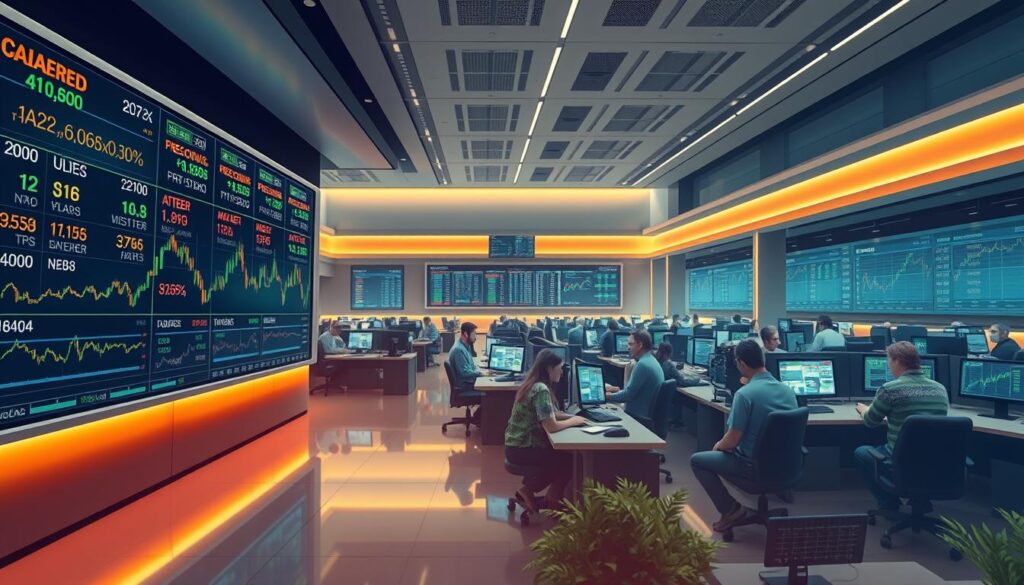
The exchange of physical goods has shaped economies for centuries, evolving into sophisticated trading systems. Modern commodity trading involves four primary categories: metals, energy sources, livestock, and agricultural products. Each category responds differently to industrial needs and environmental factors, creating distinct market behaviors.
Types of Commodities: Hard and Soft
Hard commodities like gold and crude oil maintain stable demand due to industrial applications. These resources often see price shifts from geopolitical events or production changes. For instance, oil prices fluctuate with OPEC decisions or energy policy updates.
Soft commodities include agricultural goods such as wheat and coffee. Their prices depend heavily on seasonal cycles and weather patterns. A drought can spike grain prices, while bumper crops may cause oversupply.
Spot and Futures Trading Dynamics
Spot trading allows instant transactions, like a bakery purchasing wheat for immediate use. This method provides real-time pricing but exposes buyers to sudden market shifts.
Futures contracts offer stability, letting manufacturers lock in prices months ahead. For example, a confectionery might secure cocoa supplies at fixed rates to budget effectively. Major platforms like the Chicago Mercantile Exchange standardize these agreements, ensuring transparency.
What Is Forex Trading?
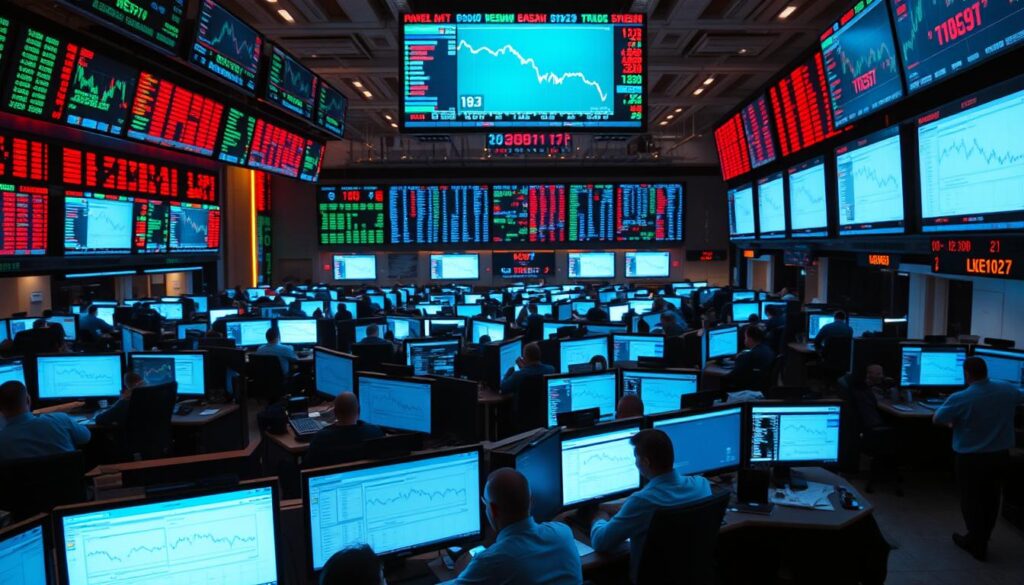
Every day, trillions of dollars change hands in a market that never sleeps. This decentralized network enables the exchange of national currencies through electronic platforms. Participants aim to profit from fluctuations in relative values, like predicting if the euro will rise against the British pound.
24/5 Market and Currency Pairs Explained
The forex market operates 24 hours across five days, following global financial hubs. Asian sessions kickstart activity, followed by European and North American trading. This structure allows continuous reactions to news like interest rate changes or employment data.
Currency pairs compare two country currency values. Major pairs like USD/JPY dominate trading volumes, while exotic pairs involve emerging economies. Traders analyze economic indicators to anticipate which side of the pair will strengthen.
Role of Leverage and Market Liquidity
Leverage magnifies trading positions, letting investors control £100,000 with just £1,000. While this boosts profit potential, it equally amplifies risks during sudden market reversals. Proper risk management tools like stop-loss orders become essential.
With daily exchange volumes exceeding $7 trillion, liquidity ensures tight spreads and instant trades. Banks, corporations, and retail traders coexist in this ecosystem, creating opportunities for short-term speculation and long-term hedging strategies.
Benefits and Risks in Commodity Trading
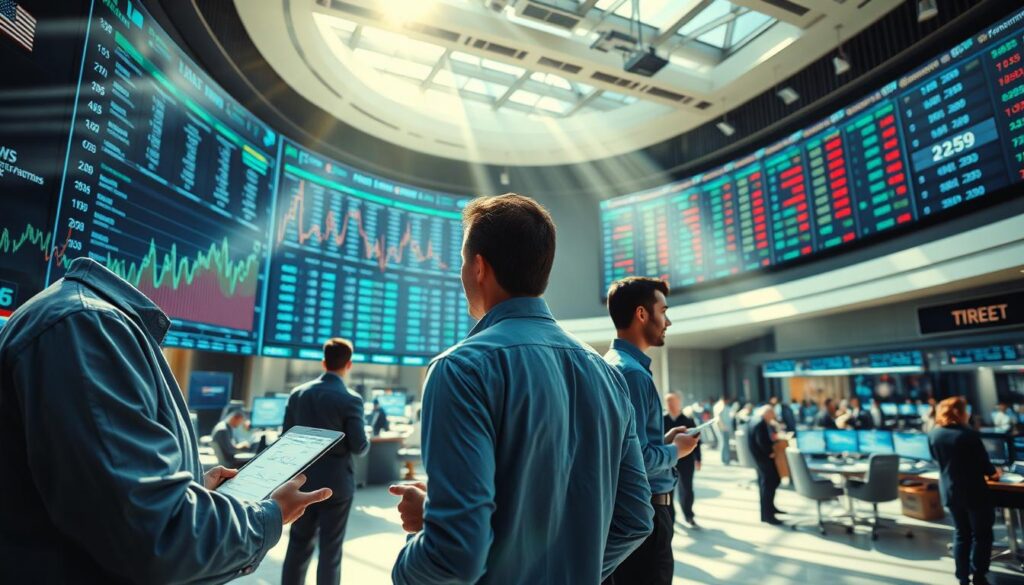
Market dynamics create distinct opportunities for those engaging with physical assets. Physical resource markets allow strategic positioning during economic shifts, but require careful navigation of unique challenges.
Advantages: Profit Potential and Diversification
Price surges during high demand periods offer significant returns. When manufacturing activity expands or inflation rises, materials like copper often outperform traditional investments. This makes trading commodities attractive for balancing stock-heavy portfolios.
Diversification works because physical assets frequently move opposite to equities. A weak stock market often coincides with stronger commodity prices, providing natural risk mitigation. Leverage options let traders control large positions with modest capital, amplifying profit potential.
Risks: Volatility, Supply Constraints, and Environmental Factors
Sudden price swings test even experienced traders. A single hurricane can disrupt oil production, causing wild fluctuations. Geopolitical conflicts or export bans compound these challenges, creating unpredictable trading environments.
Long-term sustainability issues add complexity. Increased demand for energy resources sometimes leads to environmentally harmful extraction methods. Traders must also study seasonal patterns and storage logistics to avoid costly miscalculations.
Successful participation requires understanding both market fundamentals and external pressures. While rewards can be substantial, the risk profile demands disciplined strategy and continuous learning.
Benefits and Risks in Forex Trading
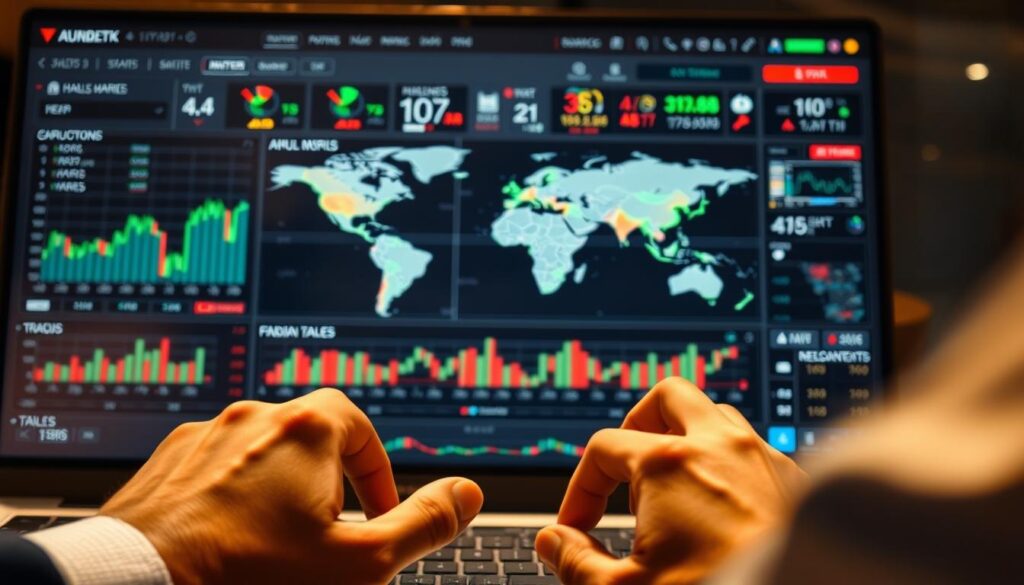
Navigating currency markets requires balancing opportunity with caution. Traders access global forex trading platforms offering unique advantages and challenges. This dynamic environment demands awareness of both profit potential and hidden pitfalls.
Advantages: High Liquidity and Flexibility
Massive daily currency flows enable instant trades with minimal price gaps. Markets process $7 trillion daily, allowing quick entries and exits even during volatile periods. This liquidity keeps spreads tight, reducing transaction costs for active participants.
The 24/5 schedule lets traders react to news anytime. Asian sessions merge into European hours, then North American activity. This structure helps capitalize on events like central bank announcements or employment data releases.
Two-way opportunities exist in rising and falling markets. Going long on strong currencies or shorting weak ones provides multiple profit avenues. Leveraged positions amplify gains, though they require careful risk controls.
Risks: Leverage, Regulatory Shifts, and Rapid Market Changes
Borrowed capital magnifies both wins and losses. A 100:1 leverage ratio means 1% market moves can wipe out accounts. Emotional discipline becomes critical when managing margin calls.
Regulatory landscapes vary across jurisdictions. Some brokers impose stricter rules than others, affecting trading conditions. Policy changes during crises can alter liquidity or restrict certain strategies.
Automated algorithms now drive 70% of trades, creating flash crashes. Individual traders compete against institutional systems analyzing data milliseconds faster. Choosing reputable brokers with transparent practices helps mitigate these challenges.
Core Insights on Commodities vs Forex
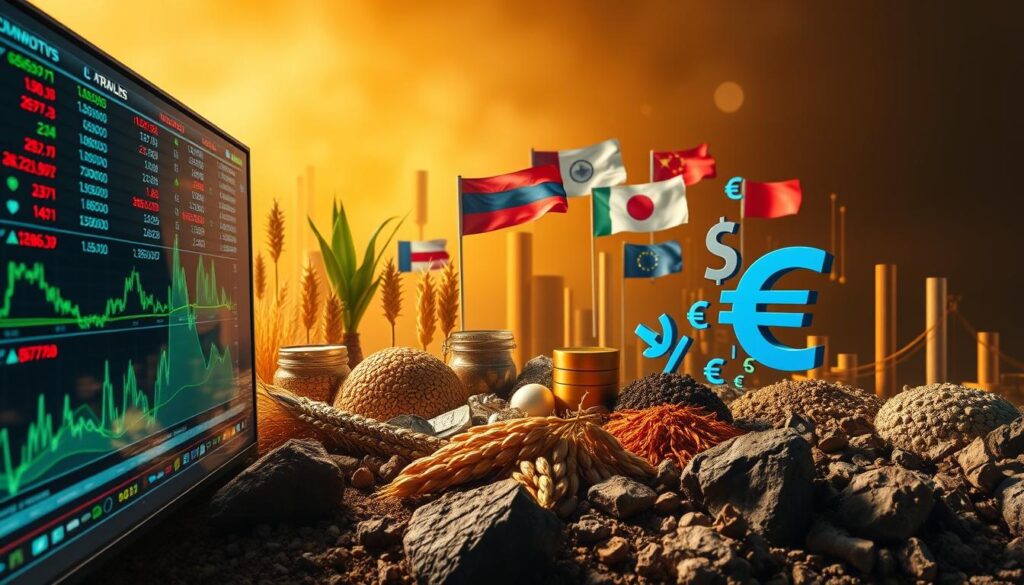
Market participants face contrasting operational frameworks when engaging with different asset classes. Physical asset exchanges and currency platforms function under separate rules that shape trading strategies and risk management approaches.
Direct Comparison of Trading Hours and Market Structures
Accessibility windows create distinct rhythms. Currency markets operate 24 hours daily across five weekdays, mirroring global financial hubs from Tokyo to New York. This allows immediate reactions to breaking news like interest rate decisions.
Physical asset exchanges follow regional schedules. Energy markets like Brent crude oil trade primarily during London hours, while Chicago grains align with North American business days. Traders must plan entries around these windows to avoid liquidity gaps.
Infrastructure and Participation Models
Currency trades flow through decentralized networks of banks and brokers. Pricing reflects real-time supply-demand balances across electronic communication networks. Tight spreads dominate major pairs like EUR/USD due to massive daily transaction volumes.
Centralized exchanges govern physical asset transactions. The London Metal Exchange and Chicago Board of Trade standardize contract sizes and delivery dates. This structure ensures transparent pricing but requires intermediaries for market access.
Regulatory oversight varies significantly. Energy markets face strict storage and delivery protocols, while currency platforms prioritize transaction speed. Understanding these frameworks helps traders select suitable instruments for their risk tolerance and operational preferences.
Trading Strategies for Diverse Markets
Market success demands tailored approaches across different asset classes. Short-term tactics thrive in fast-paced environments, while long-term planning suits cyclical trends. Matching methods to market rhythms separates consistent performers from reactive gamblers.
Technical Analysis and Short-Term Trading
Chart patterns and indicators dominate currency markets. High liquidity allows traders to exploit small price gaps across major pairs. Scalpers often target 5-10 pip movements using minute-by-minute analysis.
Day trading benefits from tight spreads and instant order execution. Algorithmic systems scan for breakout opportunities during overlapping sessions. Momentum strategies capitalize on reactions to economic reports or policy shifts.
Fundamental Analysis in Long-Term Investments
Physical asset markets reward deep research into supply chains and consumption patterns. Industrial expansion or crop failures might drive multi-year price cycles. Investors study storage data and production forecasts to spot undervalued opportunities.
Seasonal trends influence agricultural prices, while geopolitical risks reshape energy markets. Patient traders build positions during low-demand periods, anticipating future scarcity. This approach requires balancing macroeconomic insights with risk management discipline.
